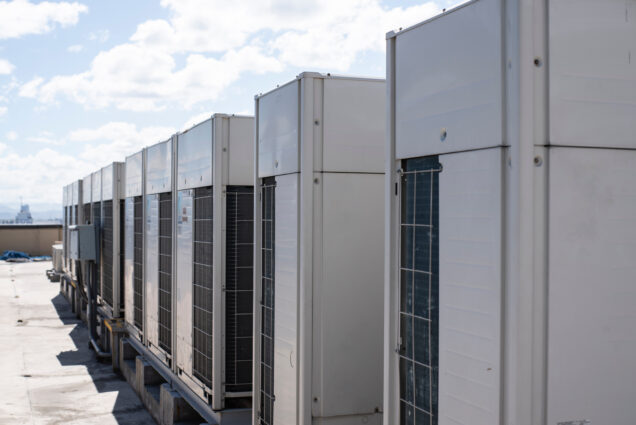Are you considering a commercial VRF system to improve the temperature and air quality of your business? Learning more about how these systems work can help you determine if they are right for your needs. In this blog post, Mission Mechanical will explore the nuances of commercial variable refrigerant flow (VRF) systems, including their components and how they differ from other types of HVAC systems. By the end, you’ll have a better understanding of whether or not one is right for your building’s climate control needs.
What Is a VRF System?
A commercial variable refrigerant flow system is a type of HVAC system that is commonly used in commercial buildings such as office buildings, schools, hotels, and hospitals. VRF systems work by using a refrigerant that is circulated through a series of indoor and outdoor units, which are connected by small-diameter refrigerant piping. VRF systems are ductless systems, which means that they do not use air ducts to distribute air throughout a building, and use heat pumps or a heat recovery system to provide heating and cooling to a building. The refrigerant is used to transfer heat from the indoor units to the outdoor units, and vice versa, depending on whether heating or cooling is required.
The VRF HVAC system allows for the use of multiple indoor units utilizing the same outdoor unit. The single outdoor condensing unit of a VRF system contains a compressor that pressurizes the refrigerant, which then flows through the indoor units and into the outdoor unit, where it is then condensed back into a liquid form. This liquid refrigerant then flows back to the indoor units, completing the cycle. This allows VRF systems to provide individual temperature control to each zone, as well as to minimize energy waste by only circulating the amount of refrigerant needed to meet the heating or cooling demands of each zone.
Benefits Offered by VRF Systems
One of the key benefits that VRF systems have over conventional HVAC systems is their ability to provide individual temperature control to different zones within a building. This allows for the temperature to be tailored to the specific needs of each zone, rather than relying on a single temperature setting for the entire building.
VRF systems are also highly energy efficient, as they are designed to only circulate the amount of refrigerant needed to meet the heating or cooling demands of each individual zone. And, most modern VRF models that Mission Mechanical has experience with carry a high integrated energy efficiency ratio as well as a high energy efficiency ratio, so you can have peace of mind that your VRF heat pump system will minimize energy waste and reduce operating costs.
The ductless design of VRF systems also allows for greater design flexibility and easier installation, as it eliminates the need for ductwork and provides more freedom in the placement of indoor units. Additionally, VRF systems can often be installed with a smaller footprint than traditional HVAC systems, which can save you money on installation costs.
Is a VRF System Right for Your Business?
Overall, commercial VRF systems provide a highly flexible and efficient solution for the heating and cooling needs of large commercial buildings. If you think a VRF system is right for your business, or would simply like to learn more about this cutting-edge technology, please don’t hesitate to contact Mission Mechanical. Our team would be more than happy to answer any questions you may have and help get your business set up with a VRF system that meets all of your specific temperature control needs and requirements.




